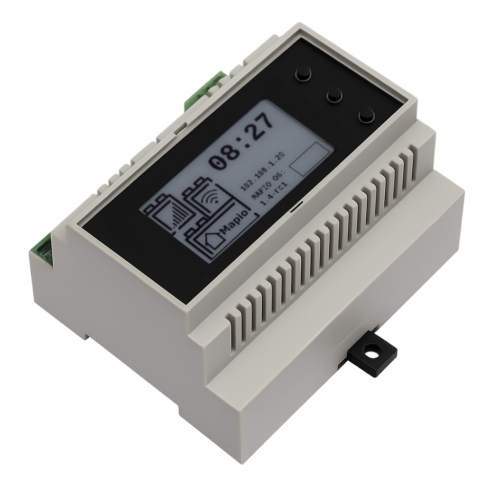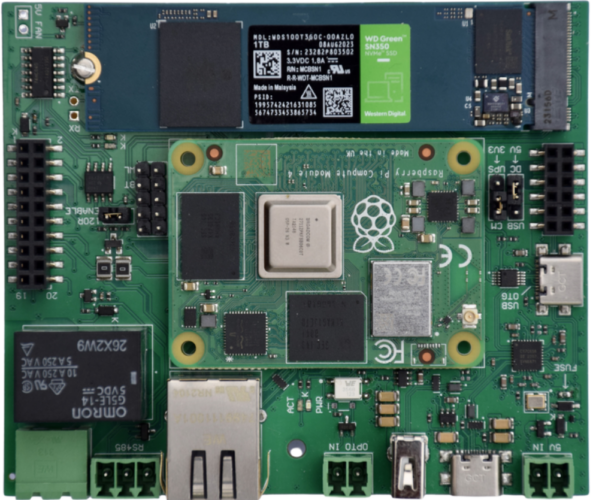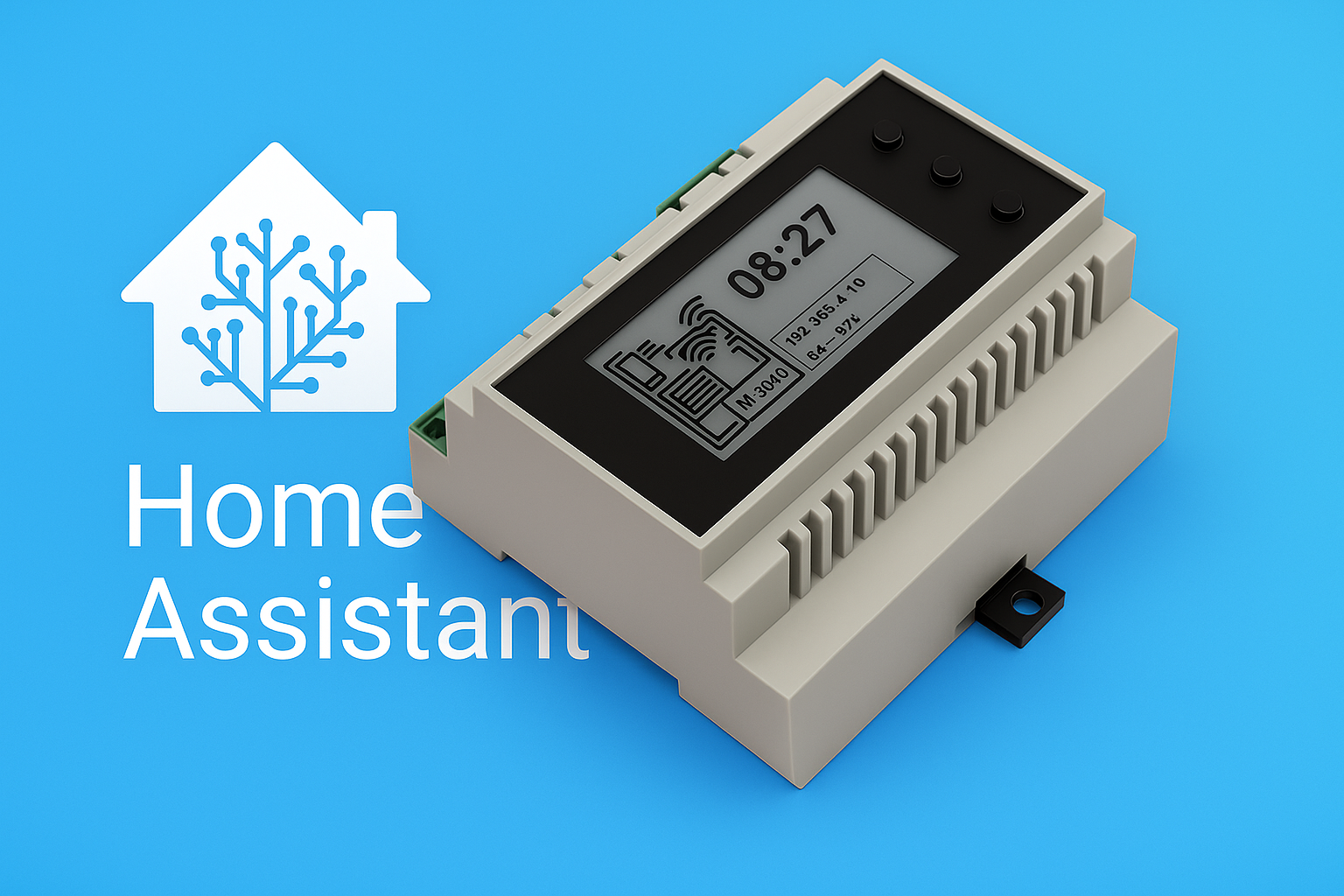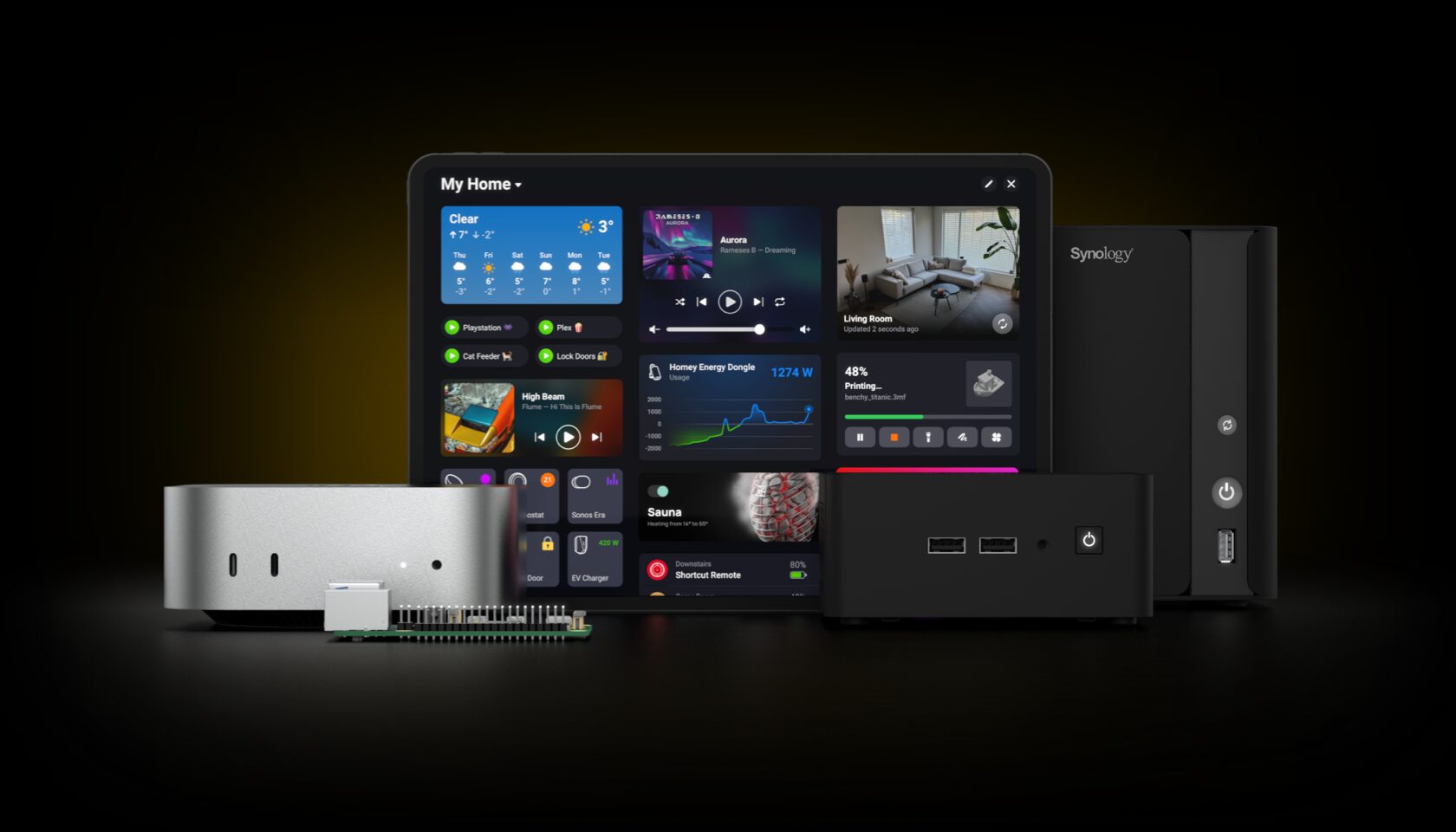Imagine for a moment: no more tinkering with Raspberry Pi tucked away in a closet, nor chasing after updates that come unexpectedly. Mapio, the new home automation box that installs directly into the electrical panel, has just come out of the woodwork, and it’s not holding back! Home Assistant, the favorite software of tinkerers and connected home enthusiasts, now runs natively on Mapio. Let’s just say that the dream of centralizing all home automation in one single place (and not just any place!) is becoming a reality.

Home Assistant at the heart of the electrical panel: the promise of Mapio
It’s a small box, but it has everything of a big one. Mapio installs on a DIN rail, directly in the electrical panel, where everything happens in a house (it occupies 6 standard slots). Gone are the shaky installations, the cables coiling behind the furniture, or servers heating up in a corner of the garage. Here, everything is centralized, clean, and above all, secure. We’re talking about true professional integration, designed to last and accessible to both experts and curious newcomers.
On the specifications side, we find:
- Raspberry PI CM4: basic configurations of 1GB RAM and 8GB eMMC flash memory with WIFI
- DIN Rail Case for installation in an electrical panel
- Integrated battery providing up to 5 hours of autonomy in case of power outage
- 1 ethernet port (speed up to 1Gbits/s)
- 1 USB A port
- 1 USB C port
- 1 PCIe M2 connector for SSD or another PCIe device
- Teleinfo input for Linky meter
- Relay for controlling a 220v device (max power 2000W)
- RS485 Bus
- 3 slots for extension modules (a Zigbee or Thread module provided by default)
- E-paper screen on the front
- 3 physical buttons
- 3 tricolor LEDs (RGB)
Home Assistant is the brain. Mapio is the muscular body that allows it to act on everything that matters: lights, roller shutters, heating, cameras, alarms… and even energy management! All of this is accessible from anywhere, with a modern interface that can be customized as desired. You can control your home at your fingertips, whether it’s on a smartphone, tablet, or computer. And for those who enjoy adventurous scenarios, anything is possible: make the living room light blink when the mailman passes, automatically cut off power when you leave the house, or receive a notification if the freezer door is left open too long (yes, this feels lived).

Installing Home Assistant in the electrical panel: simplicity and robustness
Installing Home Assistant in the electrical panel has been somewhat of a Holy Grail for many enthusiasts, especially professionals. Mapio makes this task as simple as child’s play. You clip the box onto the DIN rail, connect it to power, and off you go! No more wondering if the Wi-Fi will penetrate three walls or whether the box will crash in case of a power outage. Here, everything is designed for stability and reliability. And for those who like to keep control, SSH access and the complete openness of the platform allow for deep customization since the system runs on Docker, enabling the installation of other distributions if desired.

The real advantage is the native compatibility with a multitude of protocols: for the moment, the designers offer Zigbee or Thread, but it is not excluded that Z-Wave, KNX, Modbus modules, etc., may arrive since the system has free slots. Mapio does not play favorites and even provides documentation for those who wish to develop their own modules. Whether you have connected modules from all brands or more exotic equipment, there is a good chance that everything will work without hassle. And for integration fans, the open APIs allow you to connect Mapio to other cloud services, voice assistants, or even photovoltaic systems to monitor and optimize energy production.
Concrete uses that change daily life
Let’s take a concrete example: energy management. With Mapio and Home Assistant in the electrical panel, you can monitor in real-time the consumption of each circuit, detect anomalies, control heavy loads (like the water heater or the electric car charging station) and even automate the triggering of devices according to solar production. The result: savings in the bag, but also true peace of mind.
Another example that resonates with everyone: security. Mapio allows for the centralization of the alarm, video surveillance, smoke detectors, and even technical alerts (water leaks, power outages…). You receive an instant notification on your phone in case of a problem, and you can even trigger emergency scenarios: cut off electricity, turn on all the lights, or notify a neighbor. In short, the connected home truly becomes intelligent, and not just “gadget.”
A product designed to last (and to evolve!)
Behind Mapio, there is a French team that knows its stuff inside out. The box is designed to last, with quality components, regular software maintenance, and above all, an openness that allows for adding new functions over time. We are not dealing with a closed solution that will become obsolete in two years: here, everything is focused on sustainability and scalability. And installing Home Assistant in the electrical panel also means opting for a professional solution that reassures both installers and end users.
Mapio is also a response to the fragmentation of the home automation market. Too often, we end up with applications everywhere, boxes that don’t communicate, updates that break everything… Here, everything is centralized, harmonized, and above all, open to the Home Assistant ecosystem, which has thousands of integrations and a highly active community.
An installation that changes the game for both professionals and individuals
Installers will love it: no more need to juggle between several systems, everything takes place in the electrical panel, where they are used to working. Individuals, on the other hand, gain in simplicity and serenity. No more stray boxes, no more questions to ask about security or stability. And for those who love to tinker, the platform remains completely open, with the possibility to add modules, create custom scenarios, and even contribute to the evolution of the product.
There’s a real evolution in the way we conceive the connected home. Installing Home Assistant in the electrical panel with Mapio is a bit like moving from a 2CV to the latest electric car: you gain in comfort, security, and possibilities. And to top it off, everything is designed and manufactured in France, with a genuine attention to detail and quality.
Mapio, a winning bet for the home automation of tomorrow
It’s hard not to be excited about such a complete and well-thought-out solution. Mapio, by integrating Home Assistant directly into the electrical panel, simplifies life for installers, individuals, and even the most demanding geeks. You gain in robustness, scalability, and above all, peace of mind. And let’s be honest, seeing your house react at your fingertips, without having to worry about the technicalities, is incredibly pleasant!
So, ready to take the plunge and install Home Assistant in the electrical panel with Mapio? It’s not every day that we see such a well-crafted solution that ticks all the boxes and makes you want to reinvent your connected daily life. The solution is currently in crowdfunding campaign on Ulule, with a preferential price of €360




0 reaction